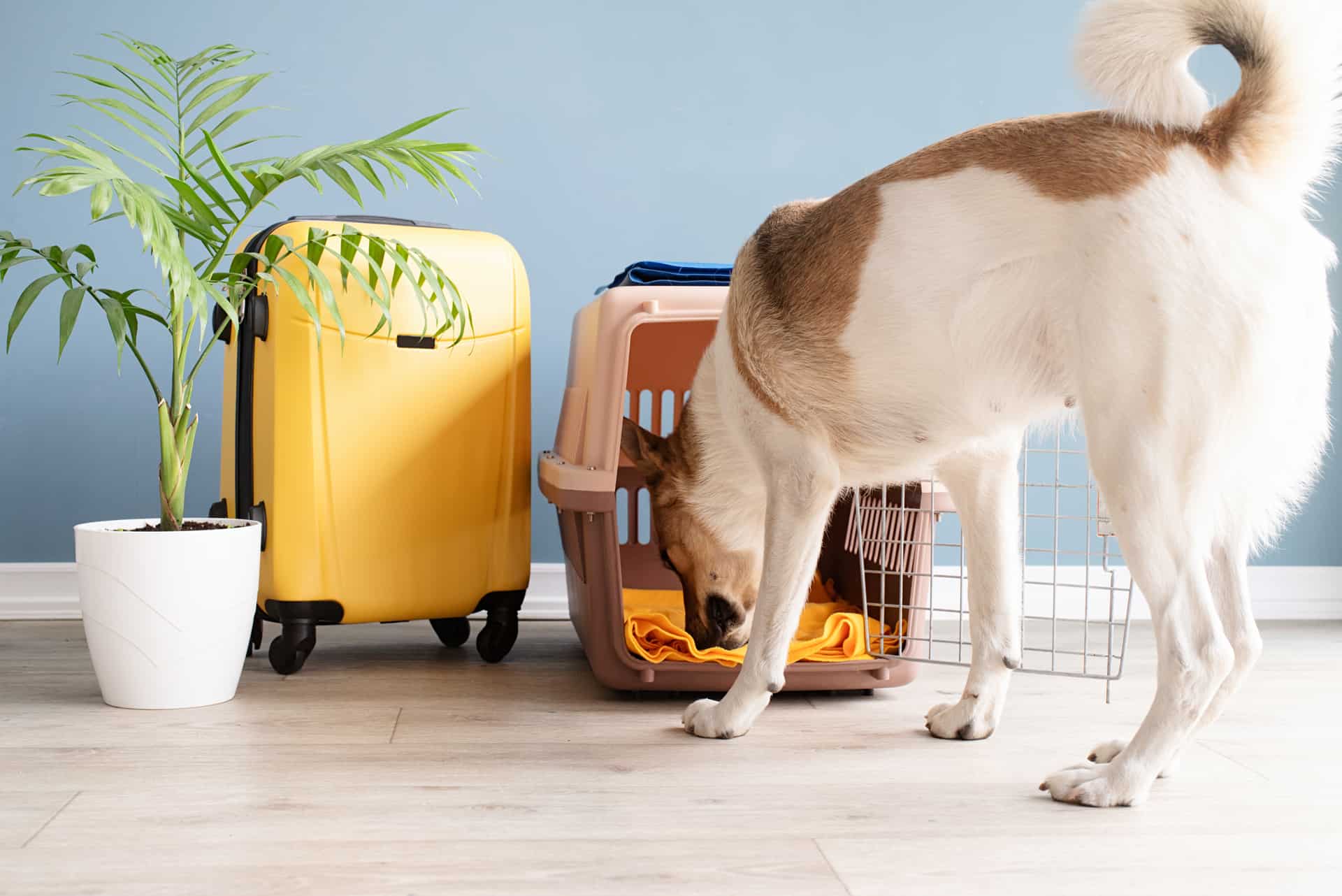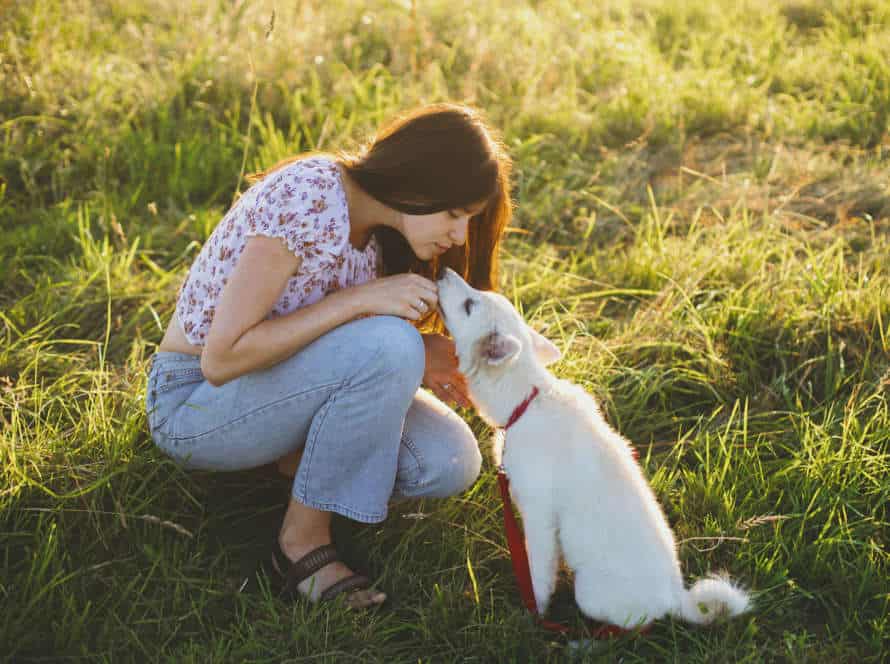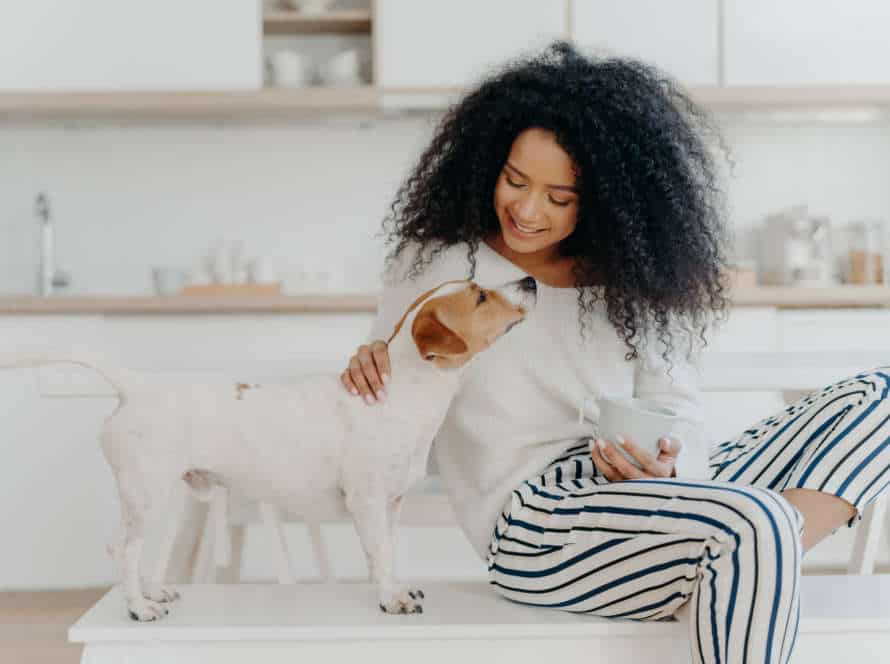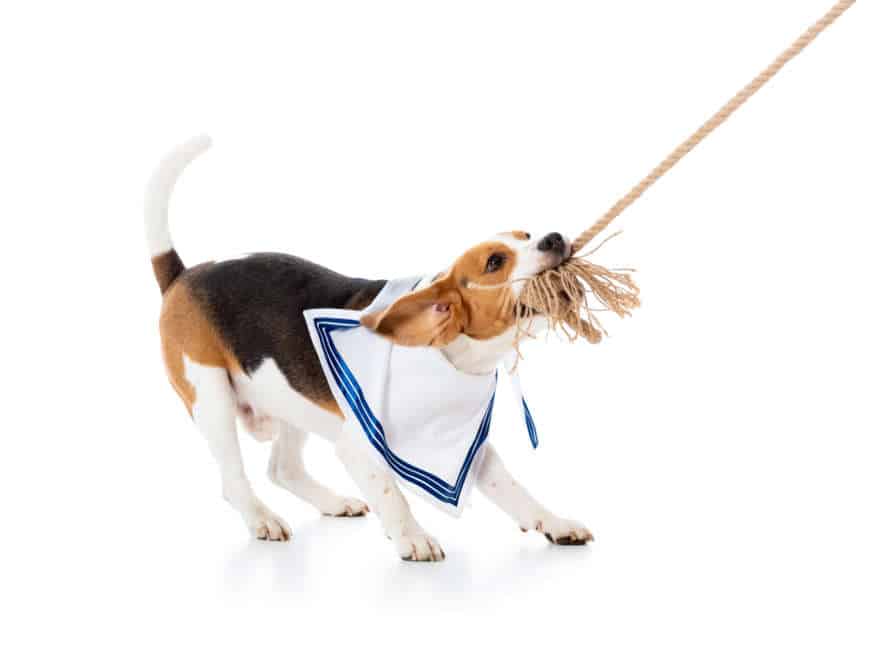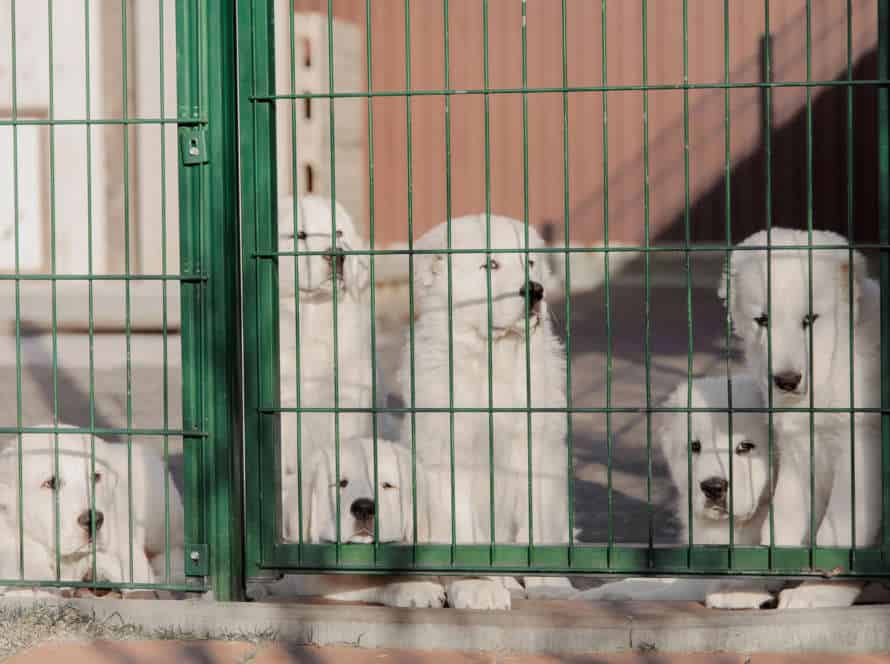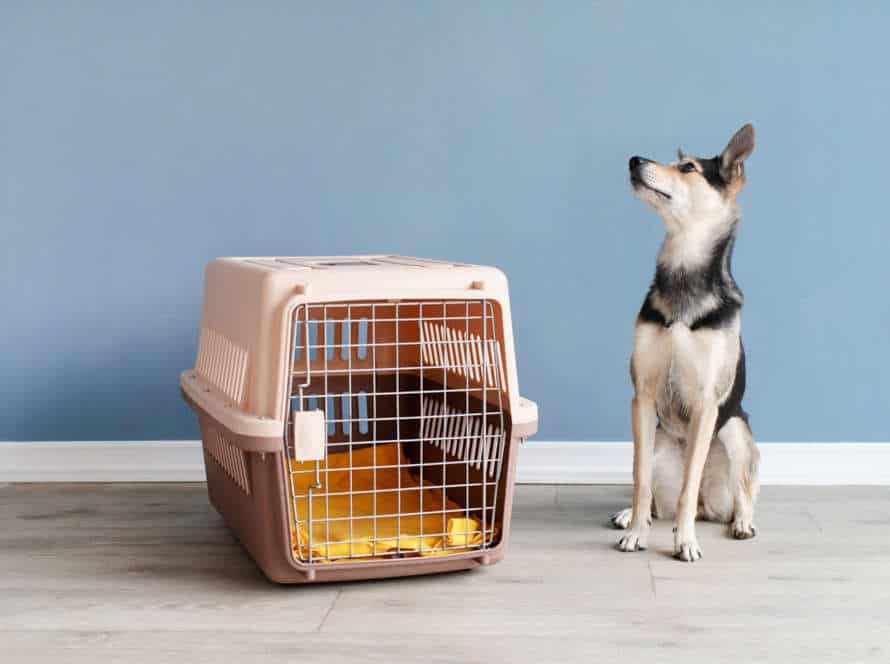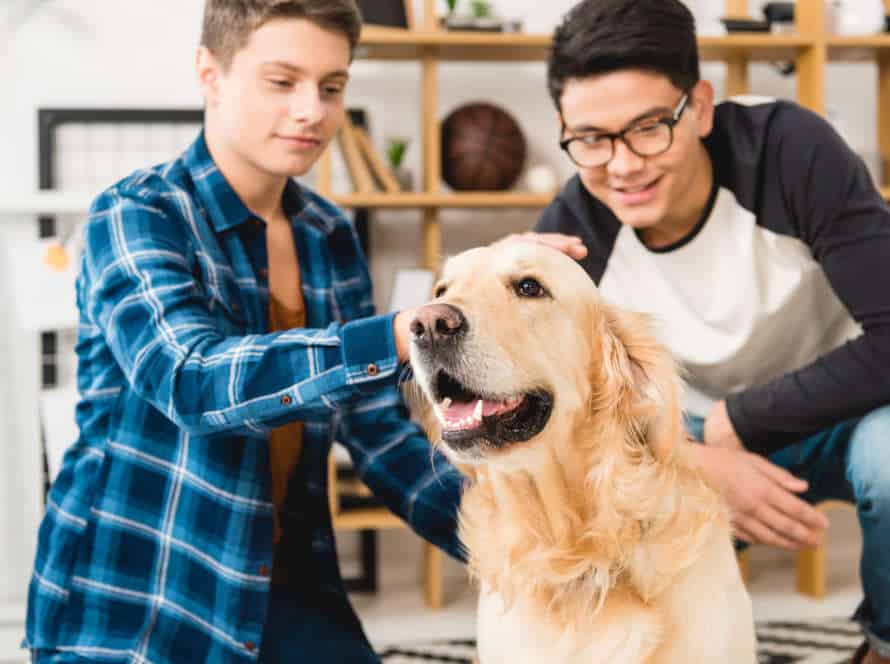How to Gradually Increase Your Dog’s Freedom in the Home
When it comes to your pup, it’s important to give them more freedom gradually. Here’s how:
- Start with a crate or baby gate to limit them to one area of your home.
- After a week or two, let your pup roam a larger area but still be supervised.
- Once they’re comfortable and obeying, you can increase the freedom and reduce your supervision.
- If they act out, go back to the previous level until they are trained.
Stay patient with your pup and give them time to adjust before increasing their freedom. Pro tip: Reward good behavior and ignore bad behavior to help form good habits.
Understanding Your Dog’s Freedom Levels
For aiding your pup with feeling comfy in their abode, recognizing their freedom level is essential. Every doggo will have distinctive necessities to bear in mind. This article will talk about how to slowly raise the freedom your pup has inside the home, while still furnishing them with the limits they need to feel secure. We’ll look at how you can guarantee your pup’s safety and contentment throughout.
Identifying your dog’s current freedom level
Identifying your dog’s current freedom level in the home?
Assess their behavior when unsupervised! Here’s some tips for understanding your pup:
- If they follow you everywhere and can’t settle when you leave, they aren’t ready for full freedom.
- If they’re not comfy alone in a different room, they need more time to adjust.
- If they chew furniture or anything else when left alone? Separation anxiety! Reduce their stress.
Once you’ve identified current freedom level, increase it slowly. Create safe spaces and reward good behavior. Patience and consistency will help your dog feel secure in your absence.
Determining what additional freedoms you want to give your dog
Assessing your pup’s current freedom level is the first step in deciding whether they can handle more. Start by testing their behavior in a controlled environment. If they obey commands, progress to level 2: tethering them to a fixed object, but with room to move. Level 3 is supervision; let your pup roam around freely, but always keep an eye on them. Level 4 is containment; a fenced yard works well. Finally, level 5 allows them to roam freely without a leash – but only if they are trained and managed carefully. Pro tip: Prevent injury or destruction by always supervising your pet.
Understanding the benefits of gradual freedom increases
Gradually increasing your pup’s freedom in your home has lots of advantages, making it worth the effort. Too much too fast may make your dog anxious, overwhelmed, or lead to destructive habits. By increasing your pup’s freedom gradually and with structure, you can stop these issues and have a happy, healthy pet. Here are some of the advantages of gradually increasing freedom:
- Better behavior: As your pup gets used to a new level of freedom and learns to handle it responsibly, they’ll be less likely to do unwanted things like chew, dig, or bark.
- More confidence and joy: With every successful freedom increase, your pup will become more confident and cheerful, which will improve their general well-being.
- Strengthened connection: Gradual freedom increases need time and consistency, which can help reinforce your bond with your pet and strengthen communication.
To make freedom increases a success, start with small steps, give lots of positive reinforcement, and prioritize consistency over speed.
Pro Tip: Before increasing your pup’s freedom, make sure they know basic obedience commands and are potty-trained. This will make the transition easier and more successful.
Steps to Gradually Increasing Your Dog’s Freedom
We all crave a comfy home for our doggos. But, it takes time for them to acclimate to the indoors with humans. It’s essential to start slow and increase their freedom gradually. This article will provide measures to gradually raise your pup’s freedom at home.
Start with basic commands and obedience training
Ready to give your pup more freedom? Start with basic commands like “sit”, “stay”, “come”, and “leave it”. Reward them for obeying with treats and praise. Positive reinforcement is key – use treats, toys, and praise when they follow a command or show good behavior. Gradually make it harder by adding distractions or changing the environment. Use a leash indoors to limit area of exploration.
To maintain good behaviors, make training a regular part of daily routines. Follow these steps to let your pup roam free safely!
Gradually introduce your dog to new areas of your home
Introducing your pup to new spots in your home is a must-do. Take these steps:
- Begin with one room and let your dog explore while supervising.
- Gradually give them more space when they’re OK with each area.
- If they show anxiety, go back and wait till they relax.
- Provide toys, treats and comfy resting spots in each space.
- Be patient and go at your pup’s pace for safety and security.
Allow limited freedom while monitoring your dog’s behavior
Letting your pup have some limited freedom and watching their behavior is a great way to slowly increase their independence in the house. Here’s what to do:
- Start by picking a small spot, such as a bathroom or laundry room, and make it their “safe space”. This should be a place they can go to feel safe and comfy.
- Gradually raise the time your pup spends alone in their safe space every day, as they get used to being by themselves.
- Once your pup is comfortable spending a few hours in their safe space, slowly open up new rooms for them to explore.
- Monitor your pup’s behavior as they go around the house, correcting any wrong behavior and praising them when they show good behavior.
- Continue this process as needed, slowly increasing their freedom and independence while monitoring their activity to guarantee their safety and well-being.
Increase freedom gradually as your dog earns trust and displays good behavior
Increase your pup’s freedom step-by-step. As they gain trust and show good behavior.
- Start small. Give your dog a secure space, like a crate or playpen. Increase space only when they’ve earned your trust and been good.
- Supervise them. Watch so you can stop bad behavior right away. Reward good with treats, compliments, or play.
- Set boundaries. Use baby gates or closed doors. Gradually give them access to new places when they’re ready.
- Gradually increase time apart. Start with short periods and increase as they are ready. If they display bad behavior during a longer absence, go back to shorter intervals.
Pro tip: Training takes time and patience. Reward good behavior and be consistent with expectations.
Consistency is Key
Gradually up your pup’s freedom in the home! It’s an essentail part of having a happy and healthy pet. Have a schedule and set some limits to train them right. Consistency is key – be persistent and have patience when granting more freedom to your pet.
Staying consistent with rules and boundaries
Be sure to follow rules and boundaries for your pup. This helps them understand what is expected of them and how to act at home. Consistency is key – it allows you to give your pup more freedom over time. Here are tips to help you stay consistent:
- Set clear, reasonable rules from the start.
- Use positive reinforcement for good behavior and discourage bad.
- Use a firm and consistent voice for commands and corrections.
- Increase freedom as your pup follows the rules.
- Don’t forget: consistency is the key to forming good habits and a healthy home for both of you!
Maintaining training sessions and reinforcement
Consistency is essential when training your pup. Here are some top tips:
- Set a routine. Regular training sessions create a structure that your pup can understand.
- Positive reinforcement works. Praise and reward good behavior. This helps keep them motivated.
- Be patient. Consistency takes time and patience. Celebrate small successes.
- Adjust when needed. If your dog has trouble with a command, reassess and adjust. Consistency doesn’t mean inflexibility.
With consistency and positivity, you can increase your pup’s freedom. Pro tip: Exercise and stimulation help further reinforce training.
Providing structure and routines for your dog
Having structure and routines for your pup is vital for their overall health and training. Consistency is a must when it comes to giving your pup more freedom in the house.
Here are some hints to help you out:
- Make a regular meal schedule to control your pup’s digestion and toilet habits.
- Designate play, sleep, and toilet areas for your pup to give them a sense of security and being at home.
- Have a steady training routine to motivate good behavior and remind them of commands.
- As your pup gets better trained and obedient, gradually increase their freedom and access to other parts of the house.
Always remember, with structure and routines, you can meet your pup’s needs, make a stronger bond with them, and make sure they live happily and healthily.
Problem Solving Tips
Is your pup wrecking the furniture? Gradually giving them more freedom can help them learn structure. Here are some tips on how to safely increase your dog’s freedom in the home:
- Give them time each day to explore and sniff.
- Provide a ‘safe zone’ where they can relax.
- Allow them to sleep in their own bed or in yours.
- Bring out new toys to keep them busy.
- Add a treat dispenser to keep them entertained.
- Encourage positive behaviors with treats and praise.
Addressing common problem behaviors during freedom training
Freedom training is crucial for dogs used to limited spaces. But, some common issues may come up during the process. Here’s how to tackle them:
- Separation anxiety – Begin gradually, only a few minutes at first. Reward them for being calm.
- Destructive behavior – Start by leaving them in an empty space. Then, slowly let them have objects of increasing value.
- Potty accidents – Set a schedule, as if they were not yet potty trained. Take them to potty after meals, naps, and play sessions.
- Fear of confinement – Create a positive connection. Use treats, toys, and nice bedding to make them feel relaxed.
Patience & consistency can help increase their freedom in the home. Also, address any problem behaviors that may occur.
Finding solutions to issues as they arise
Grow your pup’s freedom in the house. Hitches may show up. Find fast answers to fix them. Here are some tips to help you with this:
- Start with a tiny, close spot. Expand it as your pup gets comfy.
- If accidents happen, give more potty breaks. Keep them in a tiny space until accidents stop.
- If destructive, crate train or use baby gates to confine them in a secure area.
- If they bark a lot, train them with positive reinforcement or use a barking deterrent.
By tackling issues as they come and finding solutions, you can slowly increase your dog’s freedom in the house. This will make sure both you and your furry friend have a peaceful living arrangement.
Seeking professional help if needed
Gradually increasing your pup’s freedom in the house needs patience and consistency. But, if needed, professional help is always an option. Here are some times when it’s recommended:
- Aggression towards people or other animals? If your dog shows aggression, seek a dog trainer or behaviorist.
- Destructive behavior? If your dog chews furniture or destroys household items, ask a pro for help.
- Excessive barking or crying? Anxiety or distress could be the cause. A pro can help you figure out why and provide solutions.
Keep in mind, not all dogs are the same. Different dogs may need different levels of training and guidance. Don’t be afraid to ask a professional for assistance and advice.
Final Thoughts
Gradually give your pup more freedom in the house. This way, your pet will stay safe and sound. It’s a great way to let them explore and become familiar with the world, yet stay comfy and secure.
Here’s a few final thoughts about it:
Conclusion on gradual freedom increases
Increasing your pup’s freedom in the house step by step is the key to keeping them safe and also letting them have independence.
A few last words of advice:
- Always watch your dog when their freedom increases and be ready to act if needed.
- Don’t rush it – take your time so that your doggo feels comfortable at each stage before moving on.
- Give your pup lots of mental and physical stimulation to stop boredom and bad habits.
- Be consistent with teaching them so they know what is expected.
Keep in mind, all dogs are different, so have patience and go at a pace that works for you and your pooch. With time and practice, you’ll be able to have a peaceful home with a trained and contented pup.
Understanding the benefits of a well-trained and happy dog
A well-trained & happy dog offers many perks to its owner. Such as: companionship, security, and a stronger bond.
Proper training is essential for good behavior & preventing destructive habits. It can reduce anxiety, aggressiveness and excessive barking. Training also helps understand the dog’s needs & moods better, making communication simpler.
Gradually increasing the dog’s freedom to roam around the house is a sign of good training. Start by slowly increasing time & area they can access. Monitor behavior & correct any bad habits. Building trust & confidence gradually is key to a happy & well-adjusted dog.
Pro Tip: Consistency is vital in dog training. Stick to a routine, use positive reinforcement & always remain calm yet firm when correcting bad behavior.
Emphasizing the importance of patience and consistency throughout the training process.
Patience and consistency are key when training your dog to have more freedom in the home. Develop a consistent routine, rules, and rewards/punishments for your pup. Each dog learns at its own pace, so be patient and firm.
Before increasing their freedom, assess if they are ready. Monitor and correct their behavior when needed. With patience and consistency, progress is possible! Always praise and use positive reinforcement instead of negative punishment. Treat yourself and your pup with kindness – each setback is a step forward.
Frequently Asked Questions
1. Q: How do I know when it’s safe to increase my dog’s freedom in the home?
A: Pay attention to your dog’s behavior and reactions to being alone in the house. If they consistently exhibit calm and non-destructive behavior, you can gradually start giving them more freedom.
2. Q: Should I leave my dog alone for long periods of time when increasing freedom?
A: No, it’s important to gradually increase their alone time and gradually increase their freedom in the home. Leaving them alone for long periods can cause anxiety and destructive behavior.
3. Q: How can I help my dog adjust to increased freedom?
A: Start with small steps, such as leaving them alone for short periods in a single room with their favorite toys or treats. Gradually increase the time and space they have access to while remaining attentive to their behavior.
4. Q: What if my dog starts exhibiting destructive behavior when granted more freedom?
A: Reduce their freedom and space and try again after a period of supervision and training. A sudden increase in freedom or independence can be overwhelming and may require a slower, more gradual approach.
5. Q: At what age should I start to increase my dog’s freedom in the home?
A: This depends on your dog’s individual behavior and maturity level. Generally, it’s safe to start after they have developed basic house-training habits and are consistently exhibiting non-destructive behavior.
6. Q: Will crate training help with gradually increasing my dog’s freedom in the home?
A: Yes, crate training can be an effective tool for gradually increasing your dog’s freedom in the home. A crate provides a safe and secure space for your dog to be alone in, and they can gradually be given access to more space as they demonstrate responsible behavior.

